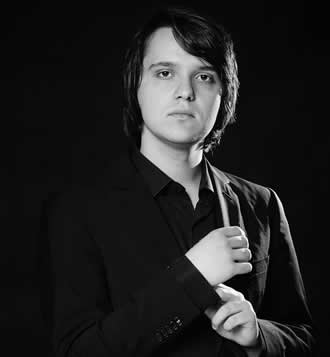Continuing the parade of brilliant young pianists heard in this 6th year of the annual Paderewski Piano Festival, 22-year-old Jakub Kuszlik, featured in the 2018 Festival, returned to play a mélange of works which showed him to be a discerning musician with a fiery technique and an introspective approach to his craft, heightened by a superb use of his instrument’s pedals.
He opened his program with Robert Schumann’s Opus 16 (1838), Kreisleriana, a set of eight movements which Schumann called a Phantasien, dedicated to Chopin (on paper; in a letter to his future wife Clara Wieck, Schumann said it was for her). This set of chiaroscuro pieces is another sign of the composer’s early bipolar nature, as pointed out in John Lambert’s review of Gloria Campaner’s recital in this festival. With the fireworks and filigree of the first movement (as he often brushed his unruly hair away from his face), Kuszlik moved to the introspective second movement, bringing out the inner-voice melodies with a magisterial use of the pedal which sustained them while not blurring the accompanying voices. The slow-fast-slow movement of the sixth part of the fantasy was appropriately capricious; the seventh part featured Kuszlik’s fast-attack fingers in his scintillating reading of the fugal section. More pedal wizardry and cross-hand legerdemain in the final movement, with its march-like tune which would be echoed in Schumann’s Symphony No. 1 led to Kreisleriana‘s unexpected pianississimo ending on two staccato eighth-notes in the bass register. Kuszlik met the challenges of these thirty pages of music head-on, conquering them with a performance which was not only note-perfect, but with a maturity of concept belying his youth.
After intermission, one of the famed transcriptions of J.S. Bach organ works by Italian composer Ferruccio Busoni, a meditative prelude on the Advent chorale “Nun komm, der Heiden Heiland” (“Come now, Savior of the nations”), was heard. While the crescendo to forte near the work’s close was not something which Bach could have done on the organs of his time, that fault was not Kuszlik’s, who simply followed Busoni’s markings.
Fryderyk Chopin’s famous first Ballade (Op. 23, G minor) received its second performance in this festival, and was greeted with vigorous applause. If the quietly-moving passages seemed restrained, the music’s fireworks were red-hot. This was followed by Chopin’s Nocturne in E, Op. 62, No. 2. Not the most frequently-played of this composer’s beloved nocturnes, its harmonically-adventurous interwoven counter-melodies were beautifully realized by Kuszlik’s sensitive performance.
(A non-musical observation: the pianist’s hair, flipping up at every fortissimo left-hand bass stroke and requiring subsequent attention by that same hand to remove the offending hair from Kuszlik’s face, is a distraction from the music, easily remedied.)
Next came Karol Szymanowski’s (1882-1937) “Scheherezade,” from his Op. 34 Masques. This quirkily-impressionistic work, including a Chopinesque nocturne-like section, again revealed Kuszlik’s extraordinary pedalling in a section featuring a legato left-hand melody against staccato right-hand motifs which were never blurred at the same time that the melody sang in its long lines.
The recital closed with Busoni’s Variations and Fugue on Chopin’s Prelude in C minor, Op. 22. We heard a variation first, then the actual Chopin prelude, then nine more variations in a number of musical languages ranging from the Baroque to the 20th century. The gigue fugue was a test of the Steinway piano’s repeating action, as the swift attack of Kuszlik’s fingers was brilliantly displayed. An encore was demanded by the Smedes Parlor audience, rewarded by the Polish dance Krakoviak by Paderewski himself, a fitting close to this festival. This is a performer to be followed as his career continues.
Congratulations to Festival founder and president Dr. Mark Fountain, and especially to artistic director Adam Wibrowski, who is tasked with recommending the pianists who continue to perform so well, year after year. Planning for 2020 has already begun as this significant contribution to North Carolina’s musical life continues.













